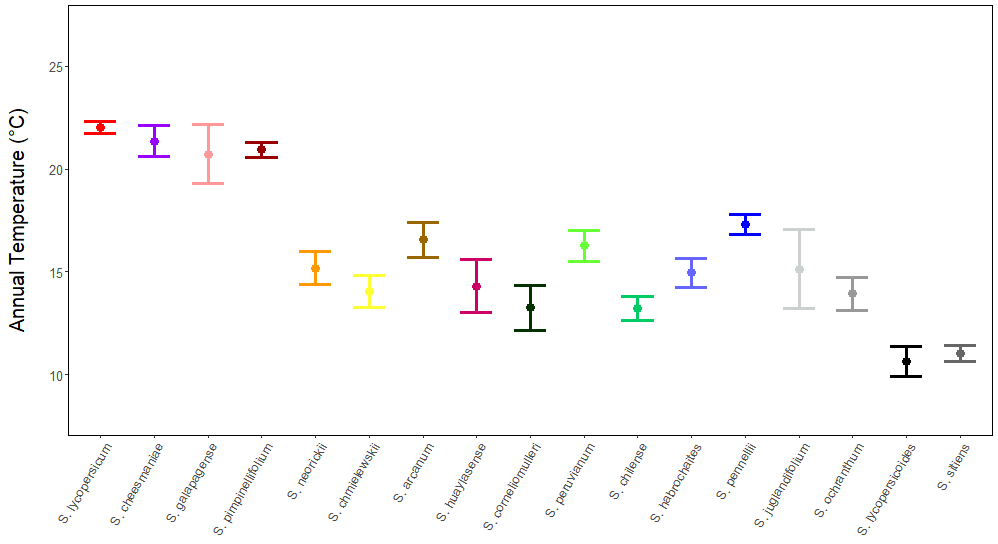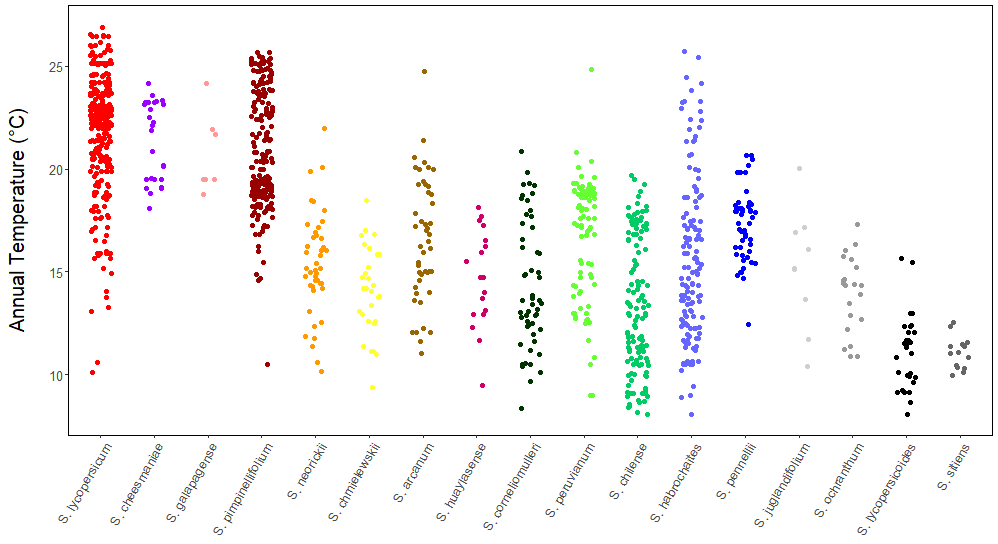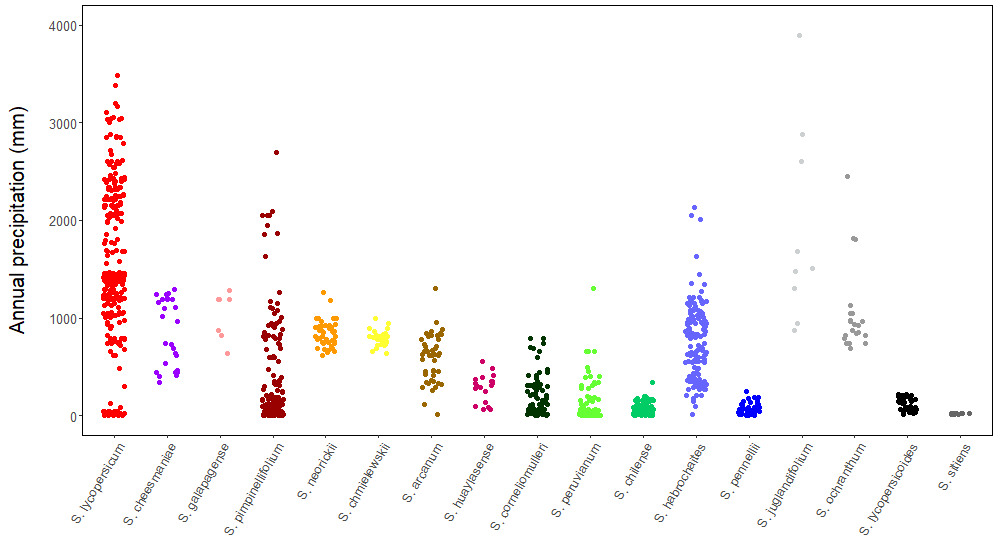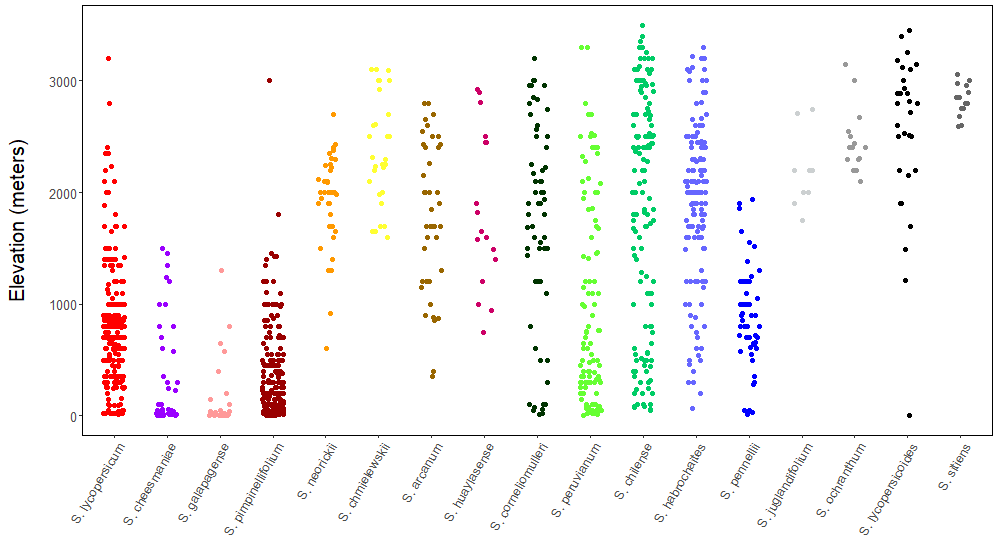Ecology
Domesticated tomatoes thrive under agricultural conditions where they are often fertilized and watered. But wild tomato species can live, without human attention, in some of the planet's most extreme environments: They are one of the few plant species found in the driest place on earth - the Atacama Desert in Chile. Other wild tomato species tolerate the rocky, salty shores of the Galapagos Islands, or cope with the daily dump of rain - more than 4m (157 Inches) per year - in South American rainforests. Accompanying these huge differences in their environment, different species of tomato have different characteristics (see Traits) that reflect their past history of surviving in different environments. In other words, species differ in their adaptations to different environmental conditions, shaped by many past generations of natural selection.
Species differences in environmental traits
How can we predict the adaptive differences we might expect between species, based on their past history of natural selection?
One way is to examine differences between the natural environments of each species. Climate information can be used to summarize the preferred habitats of each species, and the differences between them. Below are graphs showing data for three different environmental factors each wild tomato species and four of their close Solanum relatives. The central point shows the average species-wide value. The bars above and below each average summarize variation among populations within each species (in this case, the 'standard error'). Roll over or tap to show the individual values for each population location that were used to generate these species-wide estimates of climate preference. From these data you can also see that some species have many population locations (e.g. S. habrochaites, S. pimpinellifolium) whereas other species are more rare (e.g. S. galapagense, S. huaylasense).






Species geographical distributions
Where did the population data above come from? Wild tomatoes are found in modern day South America, mostly along the coastal regions of northwestern S. America and the western slopes of the Andes, from Colombia in the north to Chile in the south. For decades, researchers have been visiting and recording natural locations of wild tomato species. Use the map below to find these locations for each species.